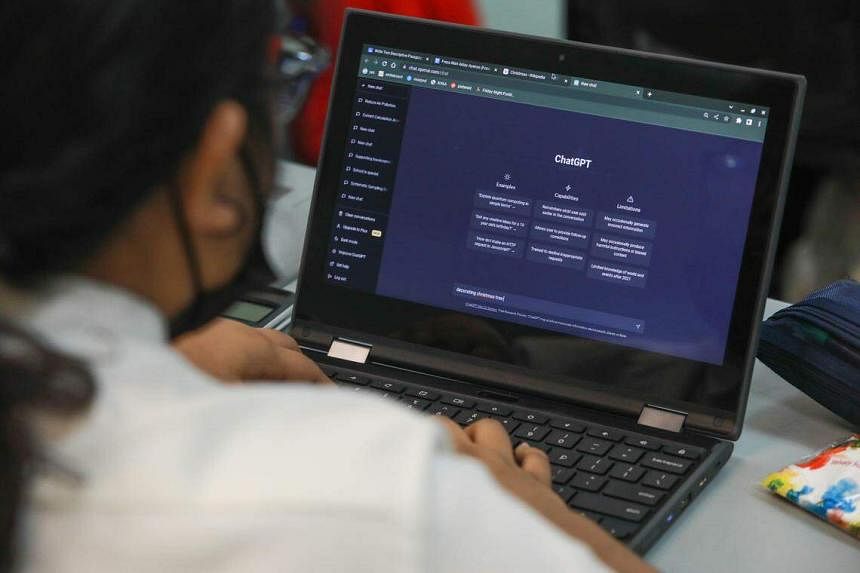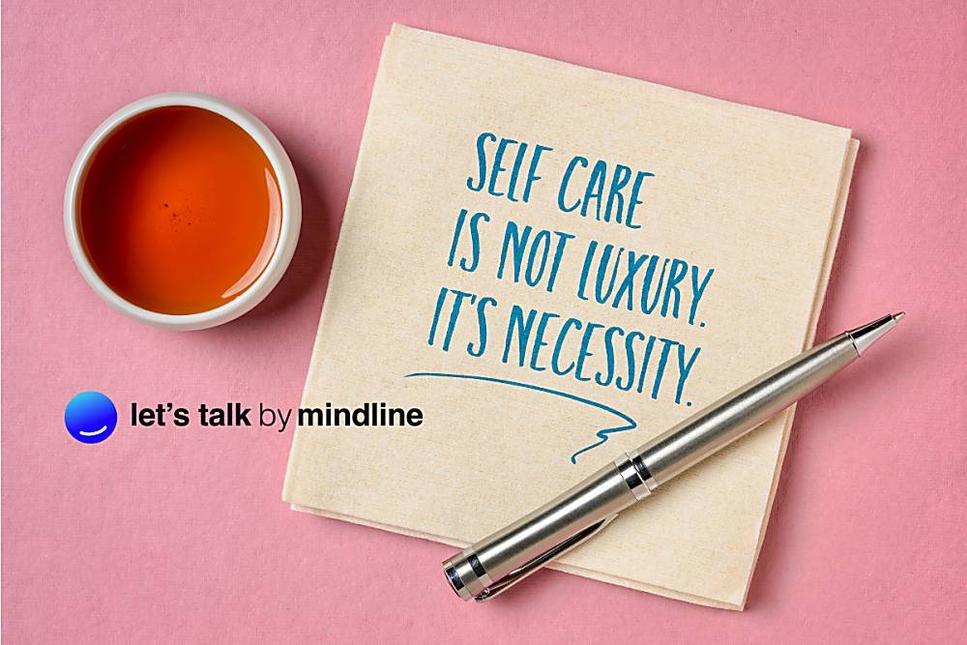Ban ChatGPT in schools? Teachers and students should be encouraged to use it
AI tools are only going to improve, and they are going to be ubiquitous. Far better to learn how to make the best use of them.

SINGAPORE - Recently, I received two e-mails on the use of ChatGPT in education. One was from a parent who was puzzled about the Ministry of Education’s decision to allow the use of the much-talked-about artificial intelligence (AI) chatbot in schools.
The mother of two, who caught her secondary school son and his friend using the AI tool to write a school essay, fears that students are likely to use ChatGPT to “cheat” in their school work and in the process, lose out on learning.
The other e-mail I received was from a junior college teacher who suspects that some of her students had used ChatGPT to write an essay she had set them. She said her students “were clever enough to hide it well” and she needed to start looking at tools that can help her detect if they had used ChatGPT.
“On top of everything I do, do I now need to worry about AI-generated homework?” she asked.
These are legitimate questions about the ethics of using AI-powered bots.
We know that GPT is the ultimate cheating tool – the AI language model from a research lab, OpenAI, has been making headlines since November for its ability to respond to complex questions, write poems, generate code and plan vacations.
GPT-4, the latest version introduced in mid-March, can respond even to images and pass the bar exam for lawyers.
And some of the current tools to detect plagiarism do not work with ChatGPT, which produces “original” content – in that it does not simply regurgitate other material online.
The bot has also raised existential worries among people in different professions, including school teachers. One teacher, who used it to write a lesson plan, said the bot had provided a detailed and useful lesson plan on a topic she intended to teach.
She wondered if AI will soon be able to teach her JC students current affairs topics for General Paper.
Some school administrators around the world have responded to ChatGPT by cracking down on its usage. Some US school districts have blocked access to ChatGPT on school computers and networks, citing “concerns about negative impacts on student learning, and concerns regarding the safety and accuracy of content”. Many have instituted restricted access.
It was heartening to learn that Singapore schools are not going in that direction. Education Minister Chan Chun Sing recently came out to say that the Ministry of Education is guiding teachers in schools and institutes of higher learning on how to use AI tools such as ChatGPT to enhance learning, given that these tools are likely to become pervasive over time.
He compared the potential use of ChatGPT in the classroom to the way a calculator provides support for students learning mathematics, but does not replace the need for them to first master the fundamentals of the subject.
Indeed, banning AI chatbots is not the way to go. In fact, our teachers should be encouraged to use AI tools to teach, and students should use them to learn.
The first reason not to ban ChatGPT in schools is that it is not going to work.
Sure, a school can block the ChatGPT website on school networks and school-owned devices. But students have phones, laptops and many other ways of accessing it.
Forget about using detection tools such as GPTZero to detect AI-generated writing. These tools aren’t accurate, and it is relatively easy to fool them by changing a few words, or using a different AI program to paraphrase certain passages.
OpenAI, which created ChatGPT, has also created a detection tool, but it cautions teachers that the tool is “far from foolproof” as it can produce false negatives, where it doesn’t identify AI-generated content, and false positives, where it flags human-written content as AI-generated. It adds that students may quickly learn how to evade detection by modifying some words or clauses in generated content.
As a group of professors from the University of Pennsylvania argued, banning ChatGPT is like prohibiting students from using Wikipedia or spellcheckers.
Even if it were the “right” thing to do in principle, it will be impossible to implement in practice. Students will find ways around the ban, which of course will necessitate a further defensive response from teachers and administrators, creating an unproductive vicious circle.
I couldn’t agree more with the professors, who said: “It’s hard to believe that an escalating arms race between digitally fluent teenagers and their educators will end in a decisive victory for the latter.”
As they cogently pointed out, AI is not coming. It is here and it will only get better. And it cannot be banned.
So, what should we do?
Learn how to use ChatGPT
Allowing, even encouraging, the use of ChatGPT in the classroom is the right move.
The second reason not to ban ChatGPT is that, with the right approach, it can be a powerful learning tool for students and a teaching tool for educators.
The teacher who wrote to me, for example, e-mailed me more recently to tell me that she and some of her colleagues were already looking at how to teach their students to compare their own essay outlines, with those created by ChatGPT and other AI bots.
She hopes that by using different AI models, her students would gain a good understanding of how to use them and how one AI-driven technology compares with another.
She hopes that in the process, her students will also learn about the flaws in natural language processing tools such as ChatGPT. Those of us who have tested it have seen first-hand how it is able to generate text that is fluent and plausible – but often wrong. Students can be asked to think about what causes these flaws, also called AI hallucinations.
The quality of the tool’s output also depends on the prompts. For general prompts on well-settled matters, it can provide some remarkably credible outputs.
But even if ChatGPT gives a good first draft, it is far from the finished product. The prompter must ask more questions to guide the tool in picking which points to elaborate and which to drop to further the argument. Facts must be checked using other sources, and the text then needs further polishing.
Students should also be trained on artificial intelligence image creators such as Midjourney or Dall-E, which are quite widely used to create custom images. History teachers, for example, can ask their students to use Dall-E to create a picture of a historical character that they are learning about as a child.
AI tools such as ChatGPT and Dall-E aren’t going anywhere; they are only going to improve, and they are going to be ubiquitous.
ChatGPT is reminiscent of the iPhone moment in 2007, which created a revolution in mobile technology.
Oral exams
That’s the biggest reason not to ban it from the classroom, in fact – because today’s students will go on to live in a world full of AI-driven tools. They will need to know their way around these tools, to work alongside them and use them to their advantage.
Through frequent practice, they will gain a good understanding on how AI works, what types of bias it contains, and how it can be misused and weaponised.
By doing so, we can ensure that they will go on to use AI for good and as a positive force for change.
As for homework using ChatGPT? Teachers will just have to find other ways to make sure that their students are mastering the subject at hand. One quick solution is of course to bring back oral examinations or vivas for weighted essays, where students have to defend their thesis and demonstrate their grasp of a subject.
This is a great opportunity for educators to explore new assessment techniques that measure learners on the skills that will matter in the workplace where AI-driven tools will be commonplace – skills such as critical thinking, problem-solving skills and creativity.
Join ST's Telegram channel and get the latest breaking news delivered to you.










No comments:
Post a Comment